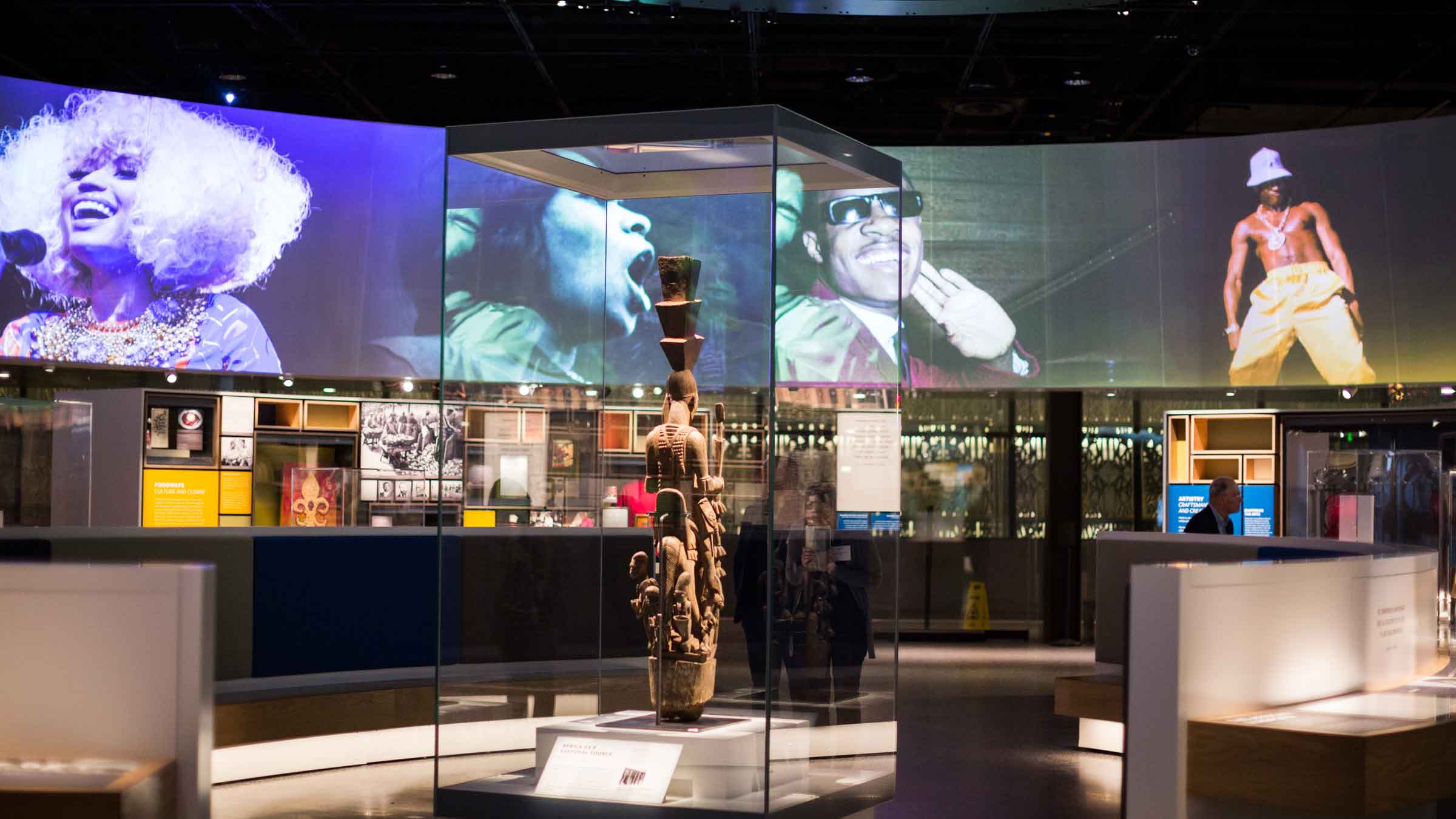In the spring of 2017, “A Vassar Evening at the Smithsonian National Museum of African American History and Culture” offered more than 500 Vassar alums exclusive after-hours access to the hottest ticket since Hamilton—the new Smithsonian National Museum of African American History and Culture (NMAAHC).
NMAAHC opened on the National Mall in Washington, DC, in September of 2016, and demand has been fierce! More than 2.5 million people have visited since then, and the roughly 110,000 passes that are issued each month are usually snapped up within two hours.
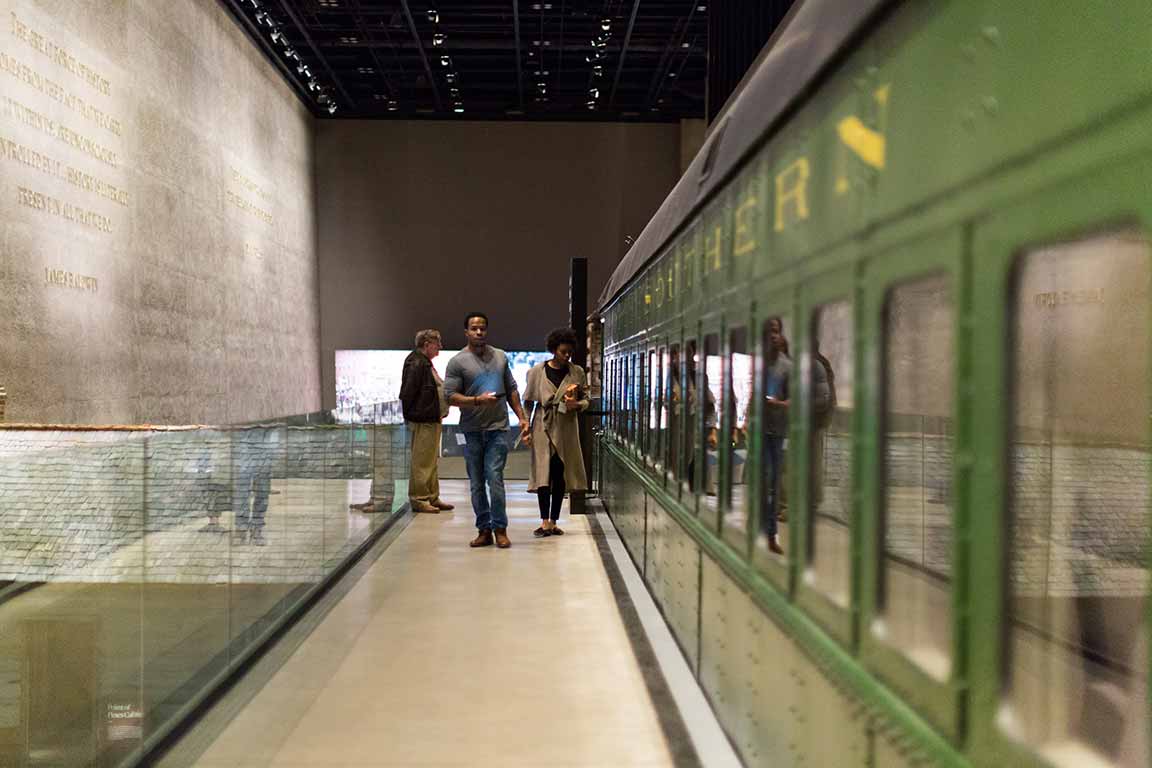
Alumnae/i and guests first attended a panel discussion on architecture and metaphor featuring Vassar Senior Lecturer Emeritus in Art Jeh Johnson, who had worked for decades as a Hudson Valley architect; Columbia University Associate Professor of Architecture Mabel O. Wilson; and the William Kenan Jr. Professor of Architecture at the University of Virginia Karen Van Lengen ’73, who served as moderator.
The event also was an opportunity for DC-area alumnae/i and members of the African American Alumnae/i of Vassar College (AAAVC) to meet and hear a brief welcome by President-elect Elizabeth Bradley. She set the tone for the evening, saying, “The National Museum of African American History and Culture gets to tell us today and every time we come back a history of African Americans that has not been told adequately.”
After the panel, visitors were free to explore the museum on their own. The multi-level space starts several floors below ground with the history of the U.S. slave trade and moves up chronologically into Reconstruction, the establishment of Jim Crow laws, the emergence of the Civil Rights Movement, and more. It emerges above ground—into the light—to focus on African Americans’ vast contributions to American culture, arts, language, entertainment, sports, and national security.
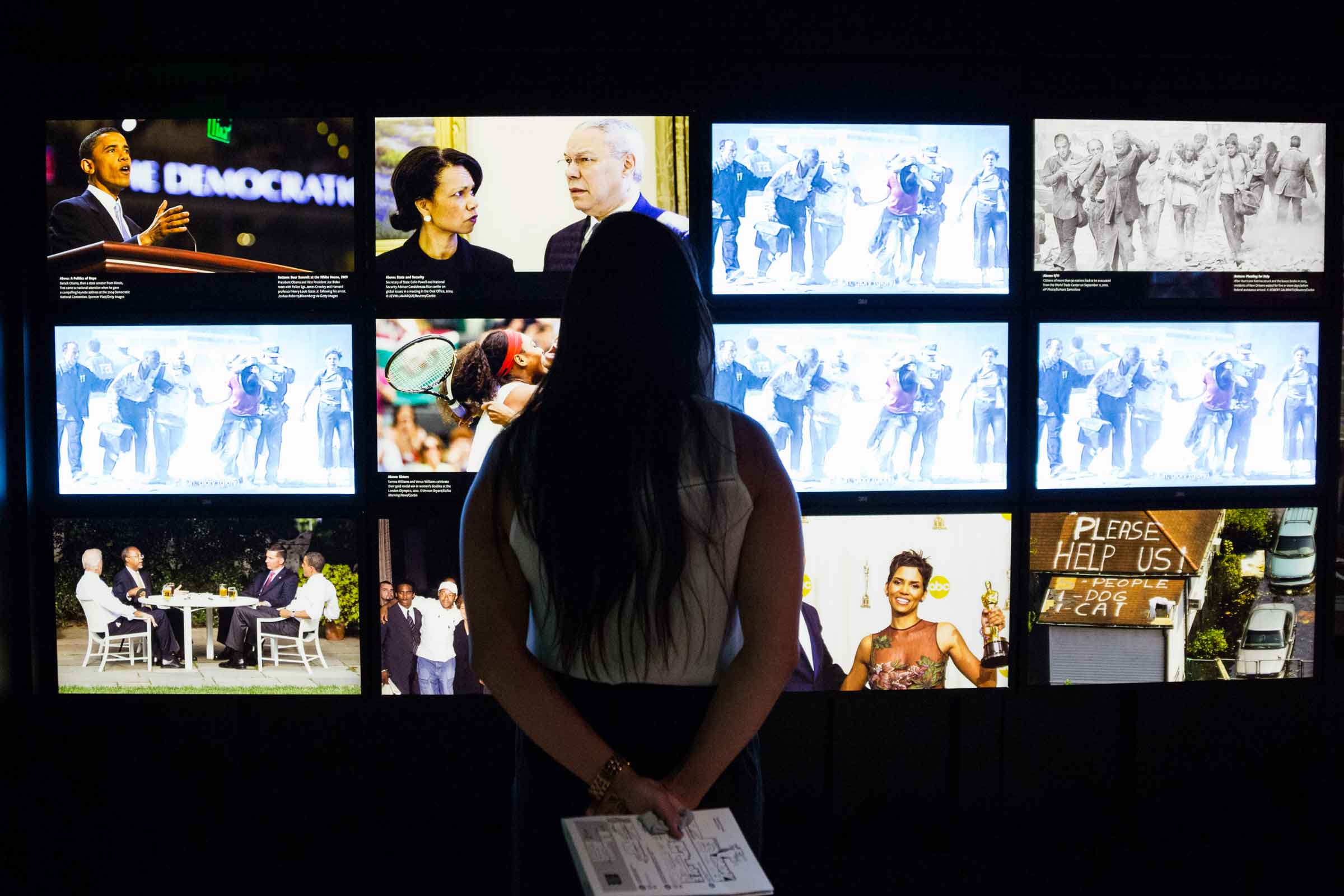
Many found the bottom floor, devoted to the history, economics, and human toll of the transatlantic slave trade, especially poignant. African American alumna Jackie Wright ’91 says, “I started at the lowest level of the museum, in the darkness and the tight quarters, which were intended to offer a semblance of the Middle Passage. Being in such a space gave me a feeling of intense claustrophobia. I felt moved beyond anything I had imagined to know that my ancestors had survived that feeling of fear, along with violent and inhumane conditions.”
Likewise, Dennis Slade ’91 found the level of detail “emotionally gut-wrenching” and says, “I will always remember the wall where they list, from hundreds of slave vessels’ manifests, how many Africans per ship died in the Middle Passage, the plaques where we see which countries were the ‘best’ in the number of slaves they delivered to the New World, and, most devastatingly, the smaller shackles used for children in the slave ships. Powerful, powerful stuff.”
While the history of the Atlantic slave trade is foundational to an understanding of African American lives, it is a mere fraction of what visitors will find in the museum. Jacquelyn Serwer P’05, who has served as Chief Curator for the museum since 2006, says the goal from the beginning was to make the museum “multidisciplinary.”
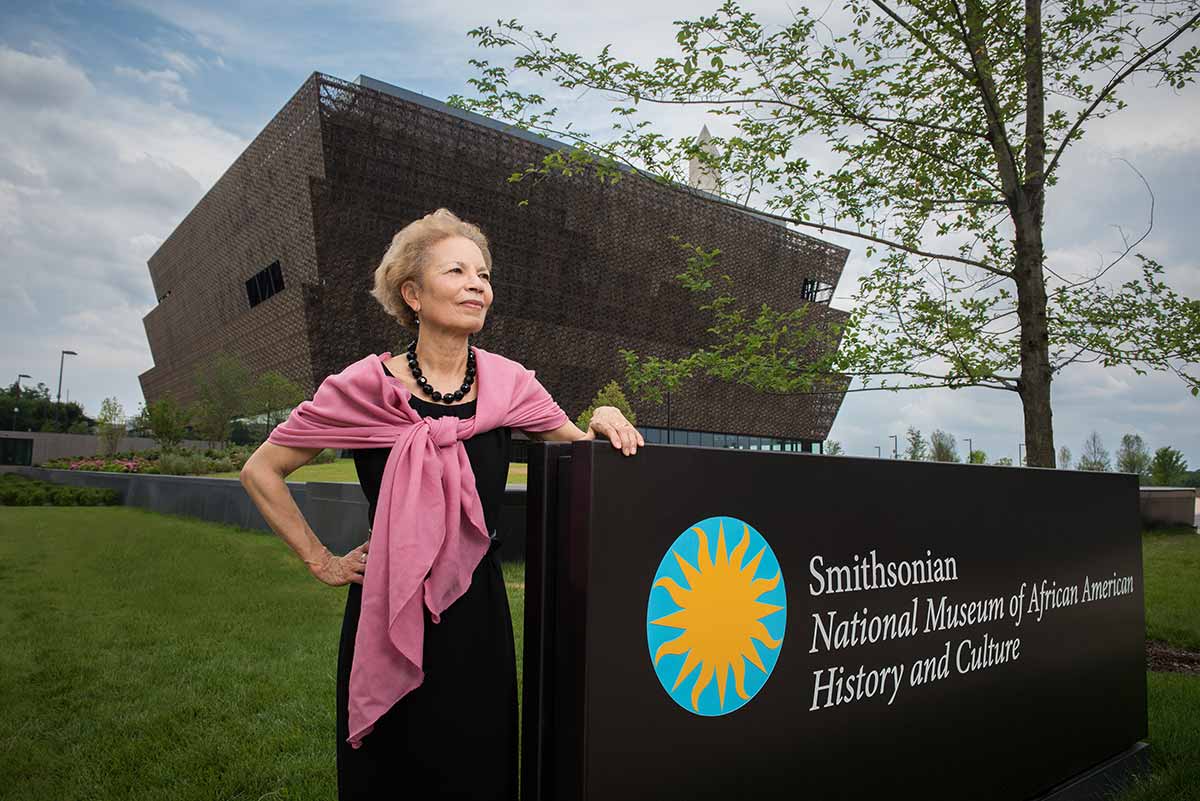
“We wanted to make it clear that there would be something for everybody...regardless of how well-steeped you were in black history.” —Jacquelyn Serwer P’05, the museum’s Chief Curator
“The whole concept of it was a little bit different from what one usually associates with a history museum,” she says. “We wanted to make it clear that there would be something for everybody. That, regardless of how well-steeped you were in black history, there would be things in the museum that would be appealing and of interest.”
Visitors will find a segregation-era Southern Railway car that serviced routes in Kentucky, Tennessee, Georgia, and Florida; a vintage biplane that was used to train Alabama’s renowned Tuskegee Airmen during World War II; and a guard tower, used in the 1930s and 1940s by guards at the infamously harsh Louisiana State Penitentiary in Angola.
The “Musical Crossroads” gallery charts the evolution of blues, jazz, RnB, and hip-hop and showcases such artifacts as a dress worn at opera singer Marian Anderson’s triumphant 1939 concert at the Lincoln Memorial; Chuck Berry’s cherry-red Cadillac; Parliament-Funkadelic’s 1,200-pound aluminum stage prop, the Mothership; and the neon sign from the music and dance show Soul Train.
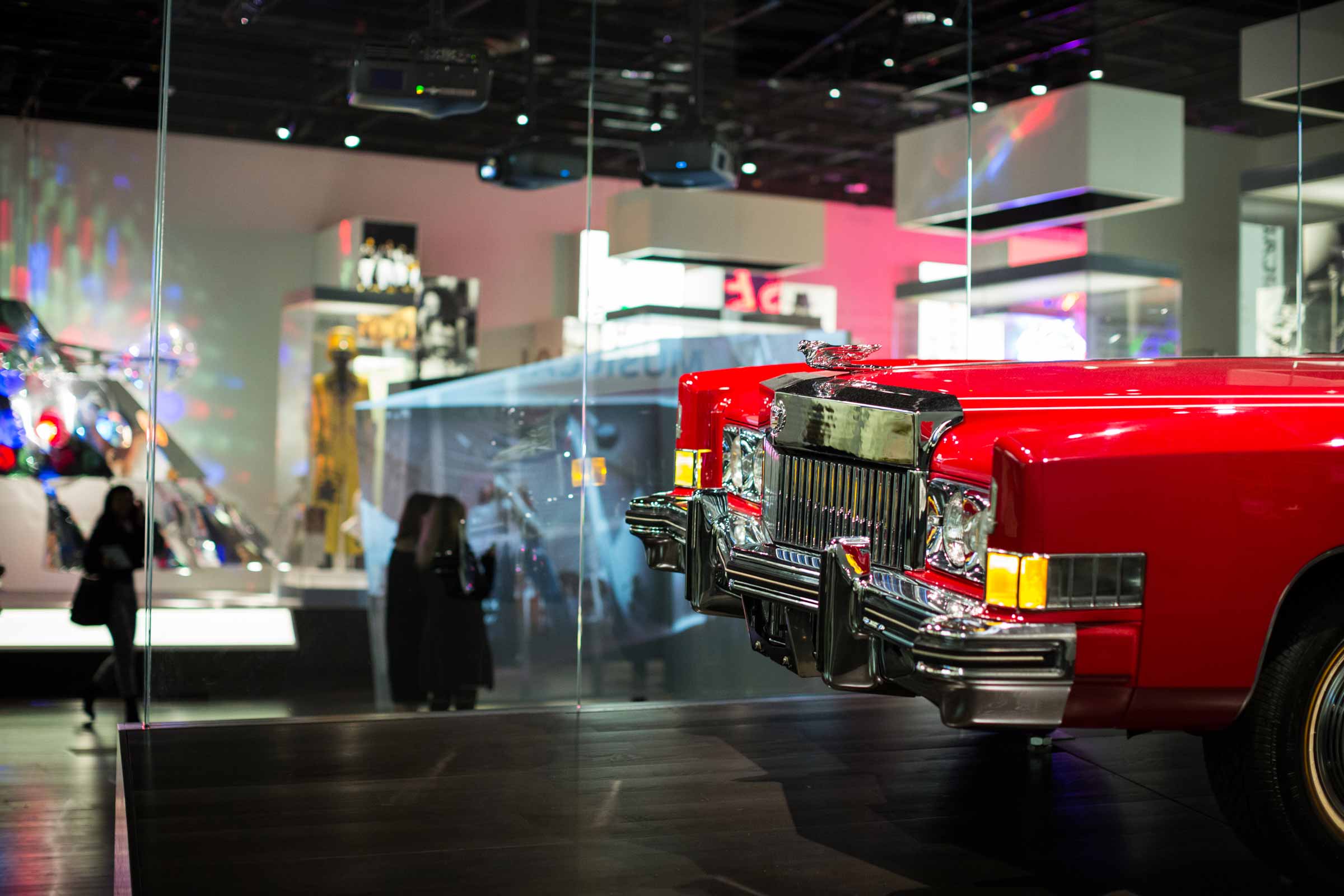
The “Cultural Expressions” section features, among other displays, an eye-opening wall showing an array of widely adopted gestures first popularized in black culture. One example is a famous photo of the Obamas doing a fist-bump. There’s also a short glossary of Gullah words used by blacks that built communities along isolated stretches of unwanted land along the South Carolina and Georgia coast after the Civil War, thus preserving their culture and language.
“Taking the Stage” charts the history of African Americans in theater, film, and television, and explores the way in which blacks have worked to produce more positive, authentic, and diverse depictions of the African American experience.
The “Visual Arts” gallery showcases paintings, sculpture, works on paper, art installations, photography, and multimedia illustrating the role that African American artists played in shaping the history of American art. Serwer, who has held curatorial positions at the Corcoran Gallery and the Smithsonian American Art Museum, says she and fellow curators had a list of artists whose work they wanted to present, but beyond that, one of their guiding principles was to select items that would resonate with stories in the rest of the museum.
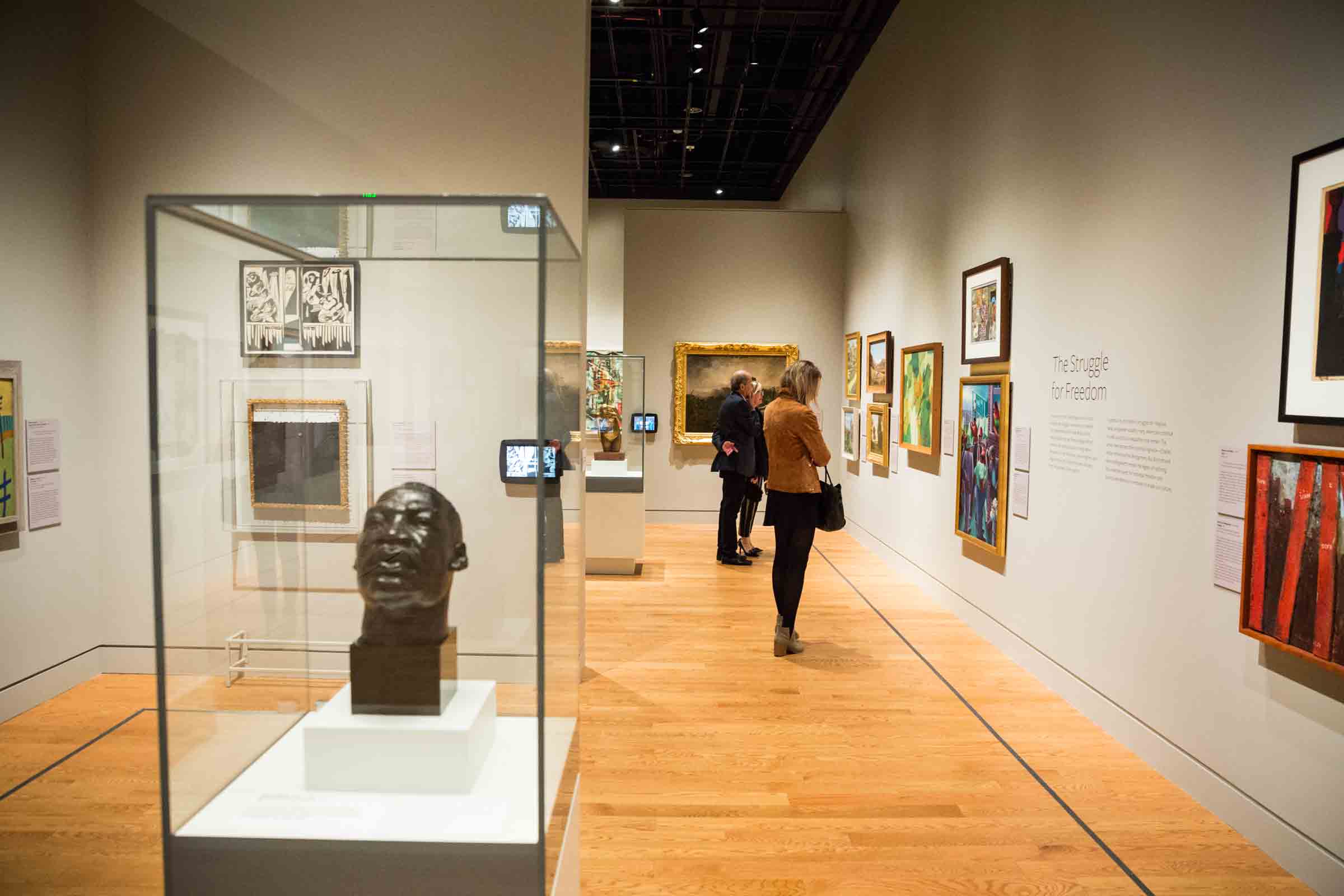
There’s a section of the Civil Rights gallery that tells the story of Emmett Till, a 14-year-old boy who, in 1955, was brutally murdered and mutilated in Mississippi by white supremacists who accused him of flirting with a white woman. Photos of his open casket helped to crystalize the Civil Rights Movement. The visual arts gallery displays David Driskell’s Pieta-like painting “Behold Thy Son,” done in 1956 in response to the killing.
The museum now boasts more than 37,000 historical artifacts, documents, photographs, and other media illustrating the major periods of African American history. That’s remarkable, considering that when the museum was approved there was no collection at all.
It took creativity and persistence. Curators sought out certain items. Companies and institutions donated others. But Serwer says the majority of acquisitions came from ordinary citizens. “Families had held onto items that they knew were precious, that they wanted to preserve. They sought an institution where they could be shared with the public, but there was no national museum until we came along,” she notes.
In 2008, museum officials launched the program “Save Our African American Treasures,” a series of daylong workshops in which participants worked with conservation specialists and historians to learn to identify and preserve items of historical value. Curators toured cities around the country, on occasion receiving artifacts from those attending the program.
These ingenious efforts helped to make a reality the only national museum devoted exclusively to the documentation of African American life, art, history, and culture.
But it wasn’t easy getting there.
Panelist Mabel O. Wilson’s book Begin with the Past details the 100-year-struggle to get the institution built. During the panel, she explained that the kernel of intention can be traced back to 1915, when black veterans, frustrated with continued discrimination, despite their service, proposed a memorial to black soldiers who had defended the country as far back as the Revolutionary War. The idea eventually morphed into a museum and educational center, said Wilson—a “holistic experience that could tell the African American story.”
In 1929, President Calvin Coolidge appointed a commission charged with building a national memorial building as “a tribute to the Negro’s contributions to the achievements of America,” but funding challenges during the Great Depression made it impossible. For the next several decades, proposals found little support. In the late 1980s, Georgia Congressman John Lewis and Texas Congressman Mickey Leland again took up the charge, repeatedly seeking legislative approval. Lewis continued to seek approval after Leland died in a plane crash in 1989.
While constituents debated the ideal degree of independence of the proposed institution, where it should be located, how it would be funded—and even whether such a museum was warranted—cities like Cincinnati and Detroit were moving ahead with their own African American history museums, and national museums like the Museum of the American Indian and the U.S. Holocaust Memorial Museum were getting the green light.
In 2001, after a bipartisan coalition again failed to secure the passage of a bill, President George W. Bush appointed a federally funded presidential commission to create an implementation plan.
Museum Director Lonnie G. Bunch III envisioned a “dark presence” on the Mall.
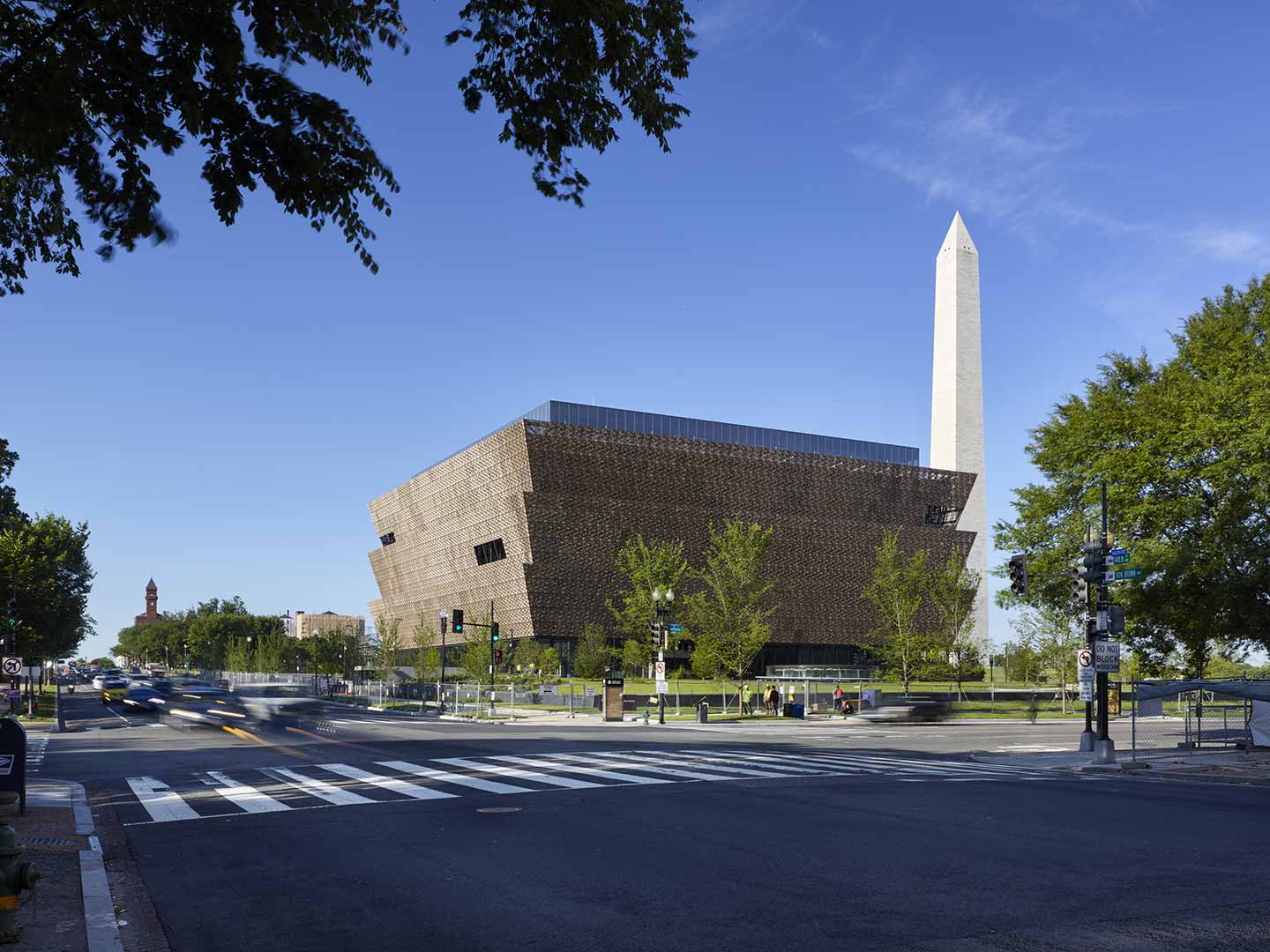
The National Museum of African American History and Culture was finally approved in 2003 by an Act of Congress, which established it as part of the Smithsonian Institution. The Smithsonian’s Board of Regents voted in 2006 to build the museum on a five-acre site on Constitution Avenue adjacent to the Washington Monument.
When it came to the architecture, the museum’s director, Lonnie G. Bunch III, appointed in 2005, envisioned a “dark presence” on the Mall, something that stood out amid the alabaster and marble structures that surrounded it. So the architectural and engineering team Freelon Adjaye Bond/ SmithGroup created an exterior that features 3,600 dark, bronze-colored, cast-aluminum panels. Lead architect David Adjaye, who designed the Nobel Peace Centre in Oslo, Norway, among other high profile buildings, was the guiding force behind the design of the panels, which form a three-tiered exterior reminiscent of a Yoruban caryatid (a traditional wooden pillar with a crown or corona at its top).
Observed from afar, the corona looks dense and opaque, but visitors emerging from the lower levels of the museum’s interior look up and out through ornate, lace-like patterns reminiscent of 19th-century ironwork. The dappled panels allow visitors to take in spectacular views of the Mall, Washington Monument, and Capitol building.
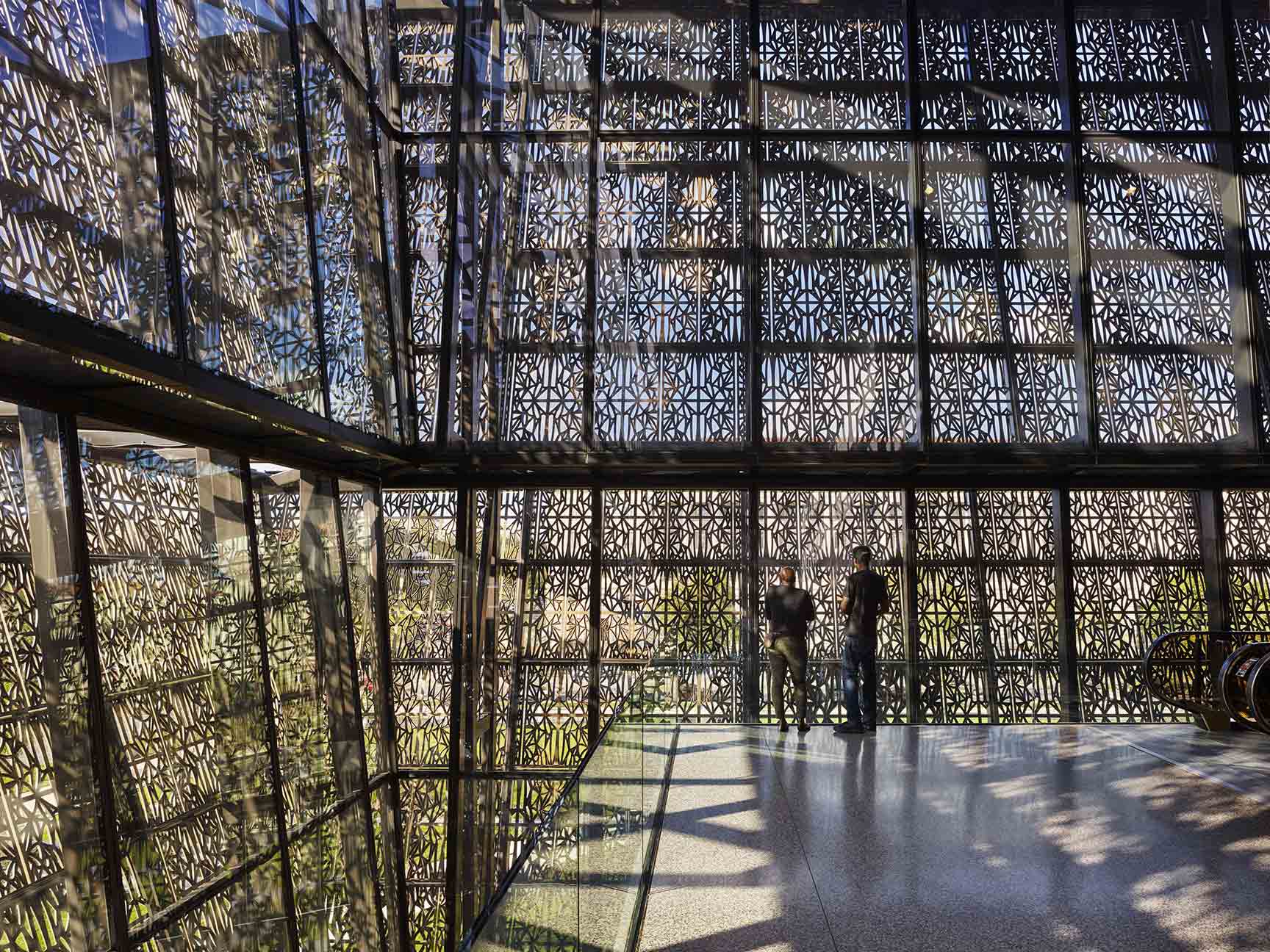
The museum’s opening was something to celebrate, says former AAAVC Co-chair Karen Roberts Turner ’86, who lives in DC. “I have had the good fortune of watching the museum come into its being from the ground up,” she says. “I am awestruck by the architectural majesty of the building itself, which stands in sharp contrast to the construction traditions of the neighboring museums and federal buildings that stand in the shadow of the Washington Monument. This juxtaposition seems especially fitting for a museum that tells the story of a people distinctively from the experience of any other group of Americans.”
Further, says Roberts, “The museum has put to shame what I thought I knew about my own history. How little did I know and how much more I have to learn! The museum is dense with information, but presents it in an engaging, artistic, and captivating way. In doing so, it beautifully unravels the very complex history of African Americans—full of trials, tribulations, and triumphs.”
